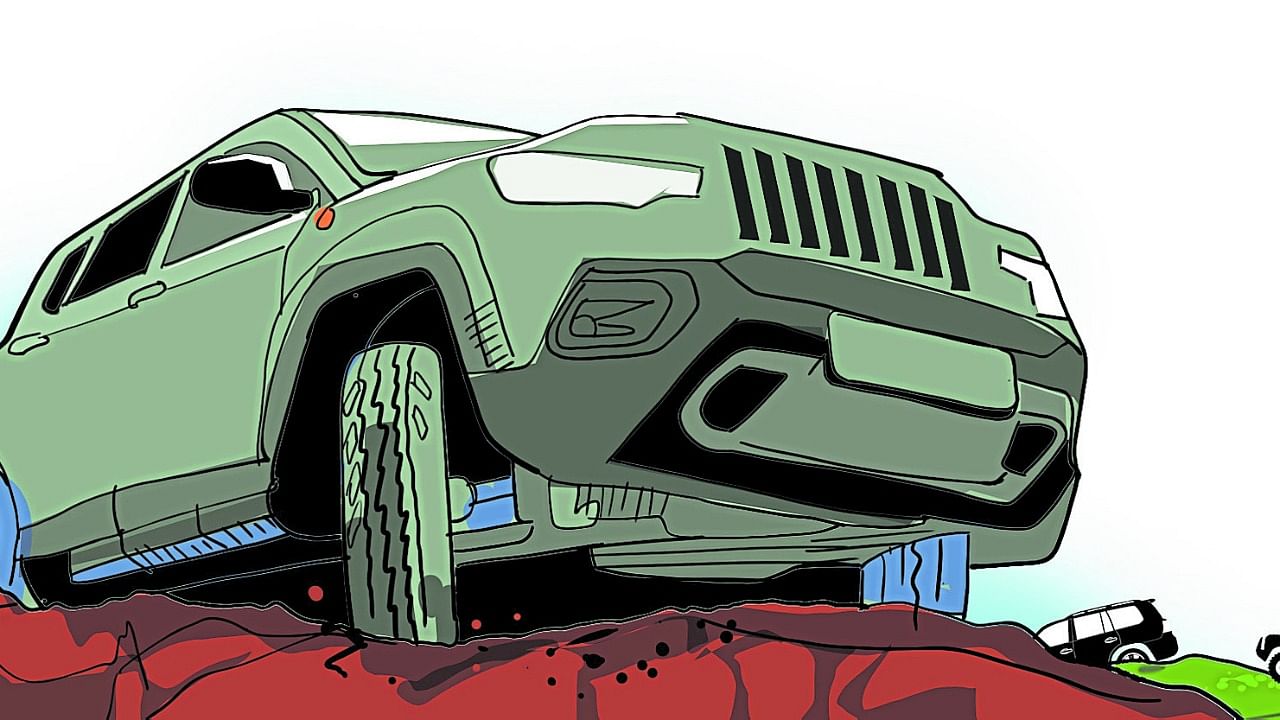
A man riding a scooter, his young kid standing in front of him and his wife on pillion with another baby on her lap – the ubiquitous picture of a middle-class family on roads across India in 2003 had made Ratan Tata conceive ‘Nano’. “I asked myself whether one could conceive of a safe, affordable, all weather form of transport for such a family,” the then Tata Sons chairman had said while unveiling the ‘one-lakh-rupee car’ five years later.
The Nano was deemed to be the most affordable car of the world. Ratan Tata wanted to offer the comfort and relative safety of a car to users who could afford a two-wheeler.
But, two decades down the line, the families on two-wheelers with children sandwiched between the parents are still commonplace on the roads across India.
Also Read | Equality – more elusive than ever
The industry data reveals that the sale of the Sports Utility Vehicles (SUVs) witnessed a surge. The SUVs accounted for more than half of nearly 4 million cars sold in 2022-23. The sales of SUVs jumped by 27% on a year-on-year basis. But the sale of entry-level affordable cars have been declining over the years. In FY 2022-23, the sale of entry level cars slumped to just 252,000 units, which is 57% lower from the peak of 583,000 units recorded in 2016-17.
Ratan Tata’s dream of migrating India’s lower middle class families from two-wheelers to cars still looks far-fetched.
There are of course two sides to this story. First, the so-called affordable cars remain no longer affordable. The second is the impact of the economic distress on the lower middle class and the growing inequality.
Even the price of Nano, launched as the ‘one-lakh rupee car’, had gone up beyond Rs 3 lakh before its production was discontinued. A popular entry-level hatchback – like Maruti Suzuki Alto, Renault Kwid and Hyundai Eon – costs around Rs 5 lakh or more.
“The segment of the society that aspires to buy an entry-level car was more severely impacted by the increase in the price of the vehicle,” said Rajesh Menon, the director general of the Society of Indian Automobile Manufacturers (SIAM).
A sizeable portion of the entry-level cars are sold in the rural markets. The rural areas have been lagging behind in the post-Covid-19 recovery. This is reflected in car sales in rural India.
“Cost increase and reduced availability of disposable income resulted in depleting sales of entry level vehicles,” added Menon.
Car prices surged due to multiple reasons. Several new regulations related to safety, emissions and fuel efficiency have been brought into force in recent years. Further, the Supreme Court has mandated that the third party insurance premium needs to be taken upfront for 3 years for purchasing a new passenger vehicle. All these have resulted in higher input cost on the vehicles. It has been further aggravated by the increase in commodity prices.
Prices of all models have gone up. So, why is there a surge in the sale of costlier vehicles like SUVs?
Vinod Aggarwal, president of the SIAM and Managing Director & CEO of Volvo Eicher Commercial Vehicles Limited, said that the surge in sales of the SUVs were “indicative of increasing income levels at the middle class and upper middle class”
“Post Covid-19, as the economy recovered briskly, especially in the urban areas, this has led to the demand for aspirational utility vehicles, including SUVs, which is seen from the higher growth that has been posted by these vehicles,” said Menon.
Clearly, the upper section in the middle-class are not deterred as they have witnessed swifter recovery post-Covid distress, while the lower middle class are sagging. This uneven recovery is a threat to India’s pursuit of sustained high economic growth to join the league of developed economies.